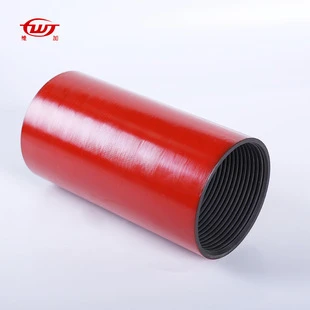- Afrikaans
- Albanian
- Amharic
- Arabic
- Armenian
- Azerbaijani
- Basque
- Belarusian
- Bengali
- Bosnian
- Bulgarian
- Catalan
- Cebuano
- Corsican
- Croatian
- Czech
- Danish
- Dutch
- English
- Esperanto
- Estonian
- Finnish
- French
- Frisian
- Galician
- Georgian
- German
- Greek
- Gujarati
- Haitian Creole
- hausa
- hawaiian
- Hebrew
- Hindi
- Miao
- Hungarian
- Icelandic
- igbo
- Indonesian
- irish
- Italian
- Japanese
- Javanese
- Kannada
- kazakh
- Khmer
- Rwandese
- Korean
- Kurdish
- Kyrgyz
- Lao
- Latin
- Latvian
- Lithuanian
- Luxembourgish
- Macedonian
- Malgashi
- Malay
- Malayalam
- Maltese
- Maori
- Marathi
- Mongolian
- Myanmar
- Nepali
- Norwegian
- Norwegian
- Occitan
- Pashto
- Persian
- Polish
- Portuguese
- Punjabi
- Romanian
- Russian
- Samoan
- Scottish Gaelic
- Serbian
- Sesotho
- Shona
- Sindhi
- Sinhala
- Slovak
- Slovenian
- Somali
- Spanish
- Sundanese
- Swahili
- Swedish
- Tagalog
- Tajik
- Tamil
- Tatar
- Telugu
- Thai
- Turkish
- Turkmen
- Ukrainian
- Urdu
- Uighur
- Uzbek
- Vietnamese
- Welsh
- Bantu
- Yiddish
- Yoruba
- Zulu
casing and tubing connections
Understanding Casing and Tubing Connections in Oil and Gas Drilling
In the oil and gas industry, the drilling process involves numerous technical aspects, and one of the most critical components is the connection between the casing and tubing. These connections not only serve structural purposes but also play a vital role in the operational efficiency and safety of drilling operations. This article delves into the significance of casing and tubing connections, their types, and their applications.
The Role of Casing and Tubing
Before understanding the connections, it is essential to comprehend what casing and tubing are. Casing is a series of pipes that are inserted into the drilled well and are essential for maintaining the well's integrity. It protects the wellbore from collapse and prevents the influx of formation fluids, which can lead to blowouts. Tubing, on the other hand, is used to transport oil and gas from the reservoir to the surface once the well has been completed.
Types of Connections
Casing and tubing connections are classified into several types, with the most common being threaded connections, welded connections, and slip-on connections.
1. Threaded Connections These are the most widely used type in the industry due to their ease of assembly and disassembly. Threaded connections come in various forms, including API (American Petroleum Institute) connections and premium connections, which offer superior sealing and strength. The performance of these connections significantly depends on the quality of the threads, as proper engagement is crucial to prevent leaks.
2. Welded Connections While less common than threaded connections, welded connections provide a seamless bond that can be advantageous in high-pressure applications. These connections require skilled labor and precise equipment, as the welding process must be executed flawlessly to ensure structural integrity.
3. Slip-On Connections Although less prevalent in modern applications, slip-on connections are still utilized in specific scenarios, particularly in temporary casing setups. They are easier to handle and can be installed quickly, making them suitable for less critical applications.
casing and tubing connections

Importance of Quality Connections
The quality of casing and tubing connections cannot be overstated. Poorly made connections can lead to catastrophic failures, including leaks and blowouts, which not only jeopardize safety but also incur significant financial costs. Therefore, adhering to industry standards, such as those set by the API, is essential when selecting materials and manufacturing components.
Moreover, regular inspection and maintenance of these connections are critical in ensuring their long-term reliability. Employing advanced inspection techniques, such as ultrasonic testing and X-ray imaging, can detect potential defects early, thereby preventing future failures.
Innovations in Casing and Tubing Technology
In recent years, the oil and gas industry has witnessed technological advancements that have improved the performance and durability of casing and tubing connections. Innovations such as the development of new materials, including advanced alloys and polymer composites, have enhanced resistance to corrosion and mechanical wear. Additionally, advancements in connection designs, such as the implementation of spiral grooves and angular threads, have led to improved sealing capabilities under various downhole conditions.
Another significant area of innovation lies in automation and digital monitoring. The deployment of smart sensors within casing and tubing installations allows operators to continuously monitor the integrity of connections, analyze data in real-time, and make informed decisions based on immediate insights.
Conclusion
In conclusion, the connections between casing and tubing are pivotal in ensuring the successful operation of oil and gas wells. As technology continues to evolve, the development of high-quality, resilient connections will play a crucial role in the industry's drive towards safer and more efficient drilling practices. Understanding the types of connections and their importance not only enhances operational effectiveness but also significantly contributes to the overall safety and integrity of drilling operations. As the industry progresses, ongoing innovation will undoubtedly lead to even more robust solutions, paving the way for sustainable growth in the oil and gas sector.
-
Tubing Pup Joints: Essential Components for Oil and Gas OperationsNewsJul.10,2025
-
Pup Joints: Essential Components for Reliable Drilling OperationsNewsJul.10,2025
-
Pipe Couplings: Connecting Your World EfficientlyNewsJul.10,2025
-
Mastering Oilfield Operations with Quality Tubing and CasingNewsJul.10,2025
-
High-Quality Casing Couplings for Every NeedNewsJul.10,2025
-
Boost Your Drilling Efficiency with Premium Crossover Tools & Seating NipplesNewsJul.10,2025







